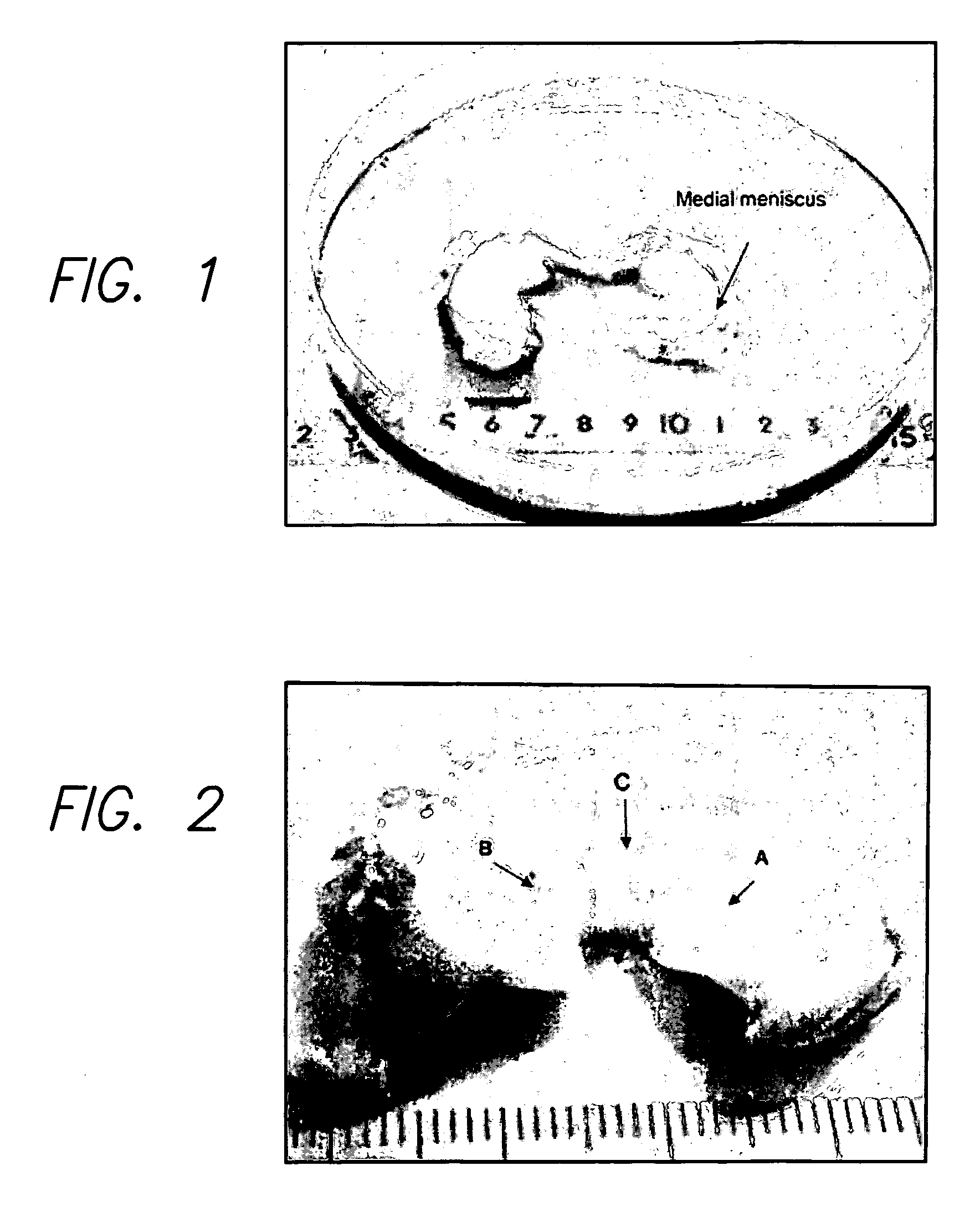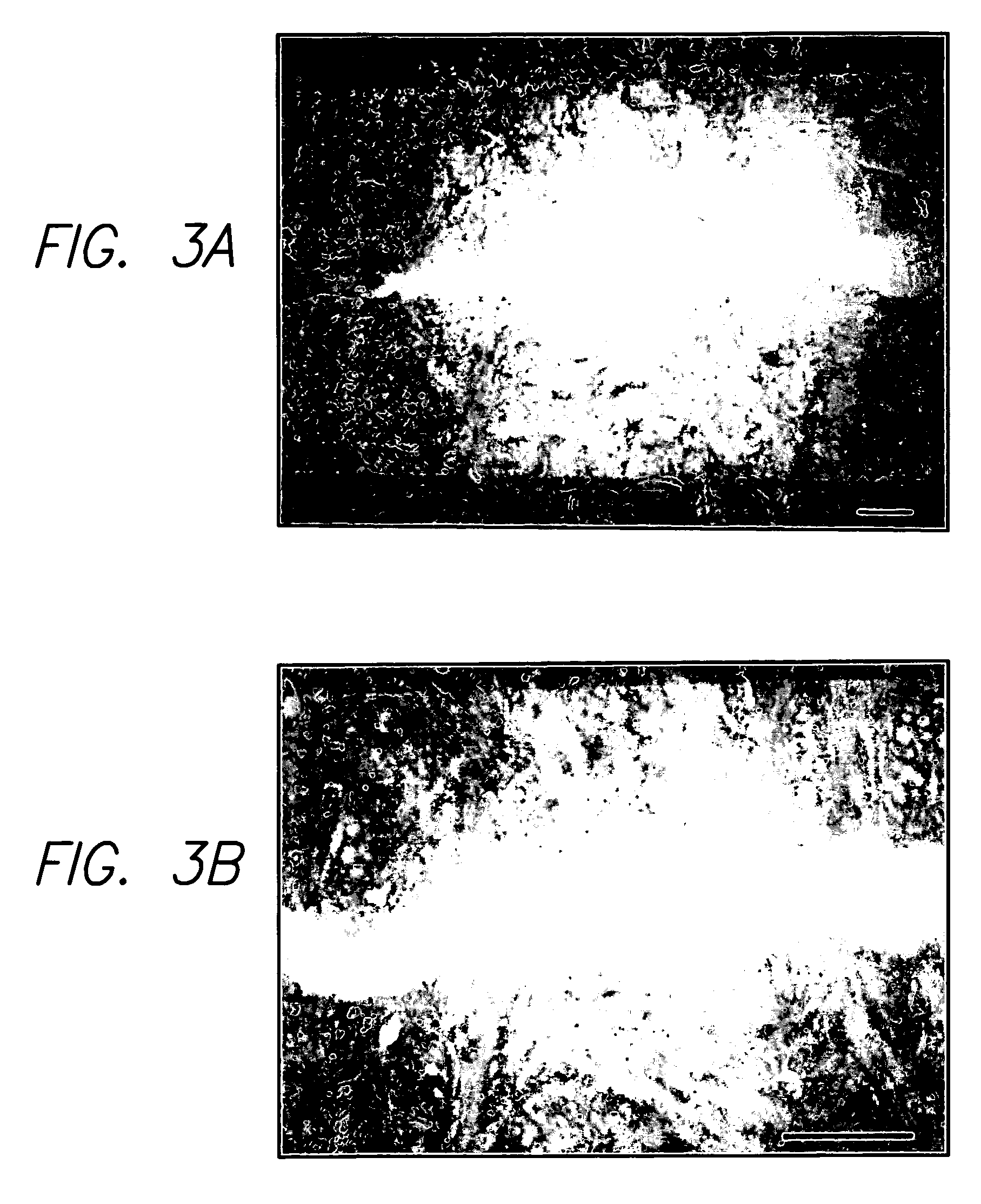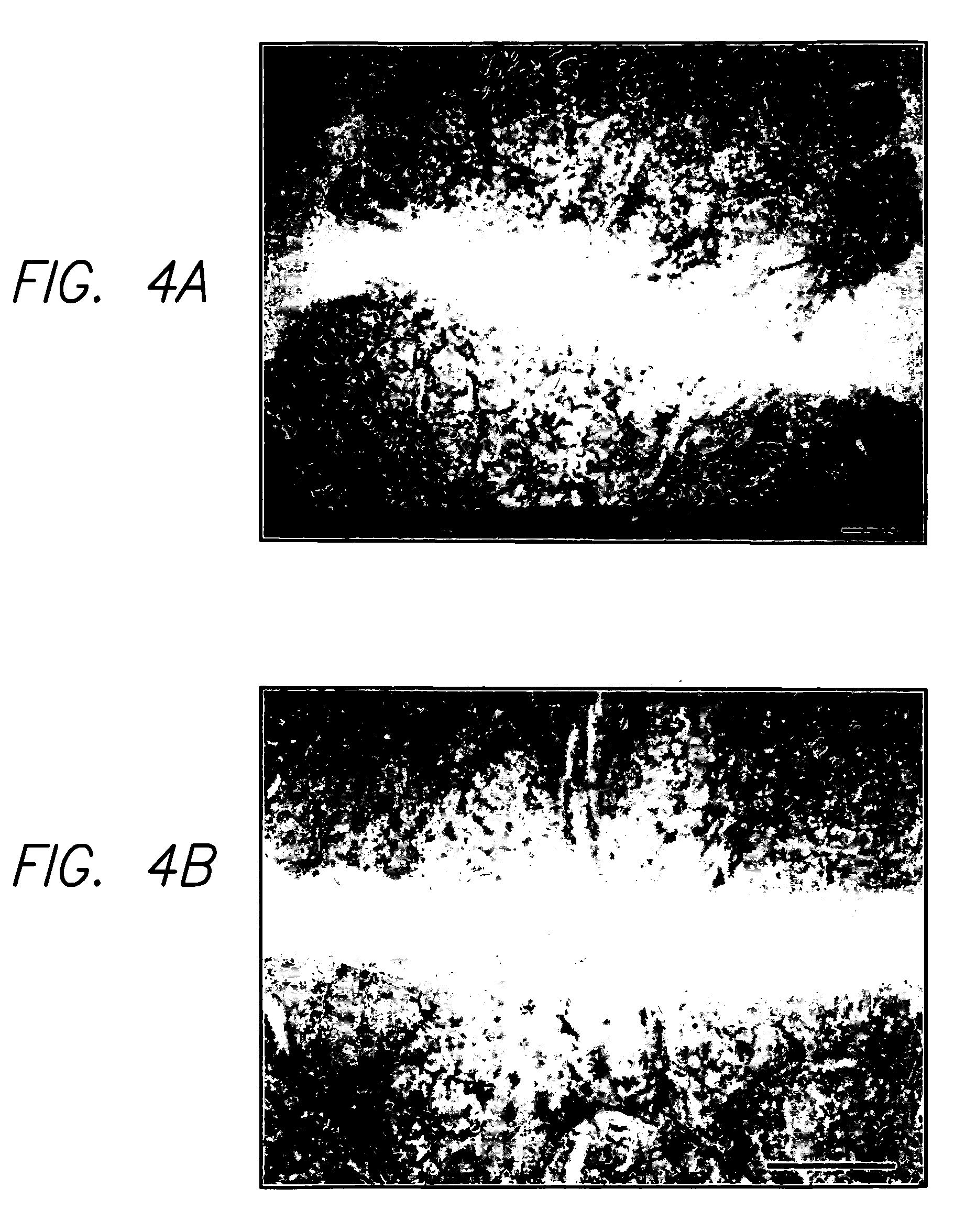In situ method for treatment and repair of meniscal injuries
a meniscus and in situ technology, applied in the field of meniscus injury repair in situ, can solve the problems of limited use of this approach, accelerated cartilage degeneration, and degenerative changes, and achieve the effect of strengthening recovery and healing
- Summary
- Abstract
- Description
- Claims
- Application Information
AI Technical Summary
Benefits of technology
Problems solved by technology
Method used
Image
Examples
example 1
Lap Shear Test
[0123] This example describes a procedure and an experimental design for comparative testing of shear strength of a collagen-PEG hydrogel, fibrin tissue sealant and PEG tissue sealant.
[0124] Lap shear test was performed according to the method described in ASTM F-2255: Standard Test Method for Strength Properties of Tissue Adhesives in Lap-Shear by Tension Loading.
[0125] The substrates made of acrylic resin plates were prepared for attaching the porcine sausage casings used for testing. Briefly, the porcine sausage casings were soaked in water to remove the salt. The casings were opened, cut to a size 25×25 mm, and placed in the humidifier box in the incubator at 37° C. temperature. The casings were glued onto the substrate with a Gel-type cyanoacrylate adhesive Loctite QuickTite SUPER GLUE®, obtained from Henkel Consumer Adhesives, Ohio. Two control adhesives, the fibrin tissue sealant and the PEG tissue sealant, were selected. These two sealants were selected for ...
example 2
Single in situ Surgical Treatment for the Meniscal Repair
[0130] This example describes a protocol for 3 and 6 months preclinical studies for a single in situ surgical treatment for the meniscal repair in a swine model with a collagen-PEG hydrogel.
[0131] The study is designed to evaluate the safety and degradation period of a collagen-PEG hydrogel material in vivo, to evaluate a method for repairing meniscal tears in the avascular zone utilizing a collagen-PEG hydrogel with strong adhesiveness in vivo and to determine the necessity of the additional agents, additives or accelerants loading into a collagen-PEG hydrogel for the in situ treatment of the meniscal tears in vivo. [0132] Animals: Miniature Hanford, Sinclair or Micro Yucatan swine [0133] Number of animals: 8 animals [0134] Number os menisci: 16 medial menisci [0135] Study period: 4 months
[0136] Evaluation:
[0137] 2 months post-op: arthroscopic evaluation
[0138] 4 months post-op: gross anatomy, MRI, histological evaluation...
PUM
| Property | Measurement | Unit |
|---|---|---|
| diameter | aaaaa | aaaaa |
| length | aaaaa | aaaaa |
| thick | aaaaa | aaaaa |
Abstract
Description
Claims
Application Information
 Login to View More
Login to View More - R&D
- Intellectual Property
- Life Sciences
- Materials
- Tech Scout
- Unparalleled Data Quality
- Higher Quality Content
- 60% Fewer Hallucinations
Browse by: Latest US Patents, China's latest patents, Technical Efficacy Thesaurus, Application Domain, Technology Topic, Popular Technical Reports.
© 2025 PatSnap. All rights reserved.Legal|Privacy policy|Modern Slavery Act Transparency Statement|Sitemap|About US| Contact US: help@patsnap.com



